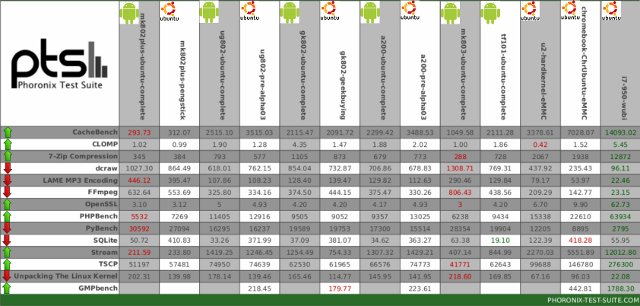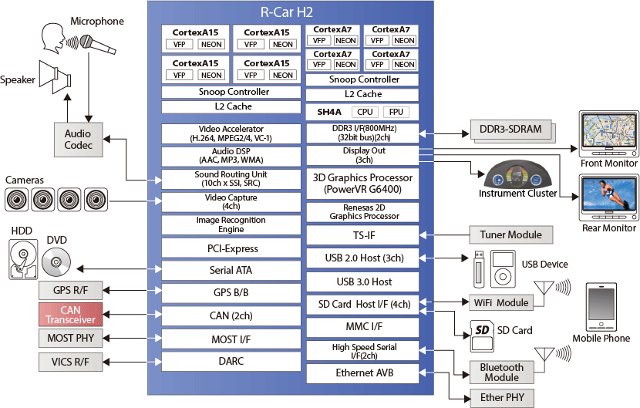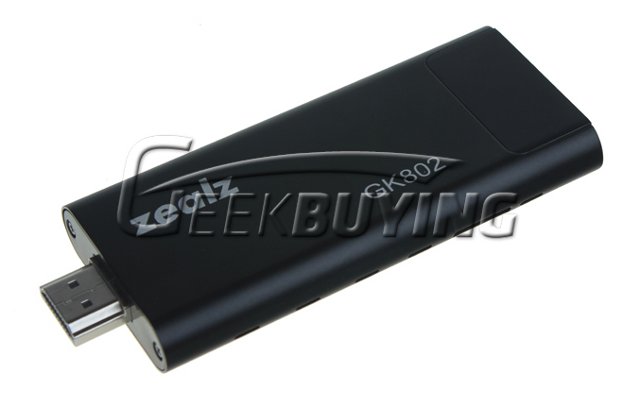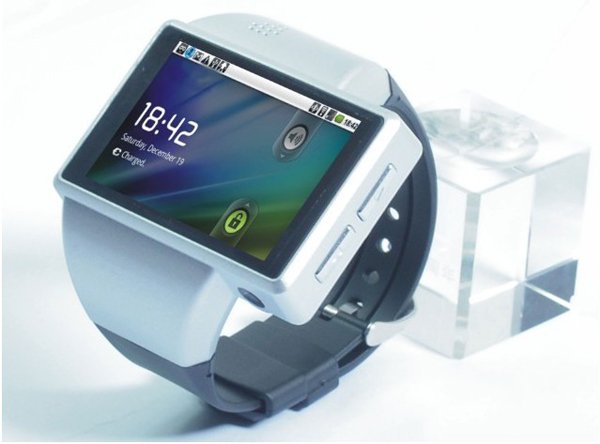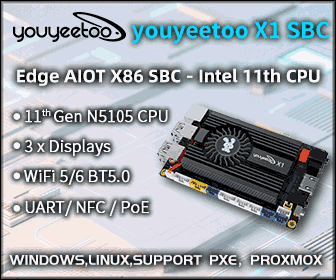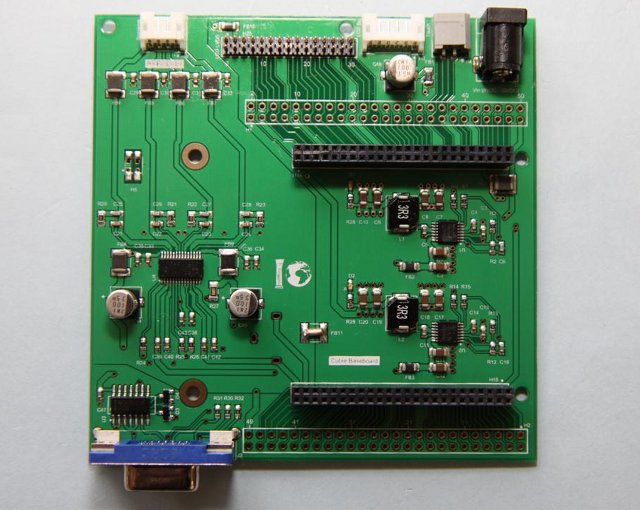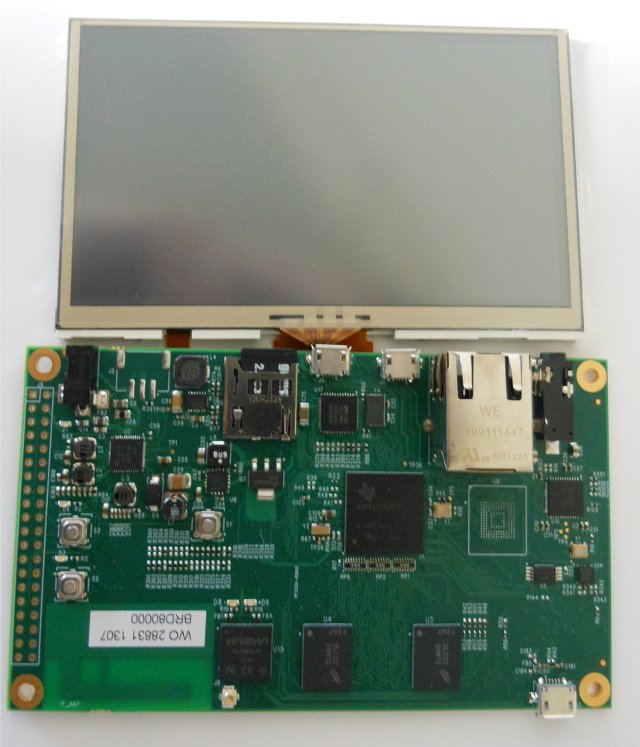Ian MORRISON (linuxium) has tested Linux with several mini PCs powered by different processors. The main point of his tests was to evaluate the performance difference between running Ubuntu 12.04 natively, or in a chroot in Android using tools such as Complete Linux Installer. I previously tried Linux on Android in ODROID-X, and found the applications start time when running from an low-end SD card pretty dismal, and the graphics performance poor. Ian had a different approach, and decided to use a subset of Phoronix Suite benchmarks to compare different hardware / software combination and posted the results in “mini PCs” G+ community. There’s a lot of data, and analyzing the results is not really straightforward without spending some time looking at the data. In this post, I’ll explain how the tests have been conducted, explain the results and try to draw a conclusion. Mini PCs and other Hardware Under […]
Renesas R-Car H2 is an Octo Core big.LITTLE Processor for Your Car
Renesas announced a new automotive SoC called the R-Car H2 that features 4 Cortex-A15 cores together with 4 Cortex A7 cores (optional) in big.LITTLE configuration, as well as an Imagination PowerVR Series6 G6400 GPU. This SoC can optionally come with Renesas SH-4A, a real-time processing CPU core acting as a multimedia engine (MME) , and Renesas’ IMP-X4 core, a real-time image processing unit that enables developers to implement augmented reality application such as 360-degree camera views and image recognition. This Renesas processor is a multimedia power house, as it can handle 4x 1080p video en/decoding, including Blu-Ray support at 60 frames per second, as well as image/voice recognition and high-resolution 3D graphics with virtually no CPU usage. Here are R-Car H2’s specifications provided on Renesas website: Product number R8A7790x Power supply voltage 3.3/1.8 V (IO), 1.5/1.35 V (DDR3), 1.0 V (Core) CPU core ARM Cortex-A15 Quad ARM Cortex-A7 Quad (device […]
OpenELEC 3.0.0 on Raspberry Pi – Installation and Video Tests
Yesterday, OpenELEC developers announced the release of OpenELEC 3.0.0, a lightweight OS running XBMC Frodo 12.1 for several platforms including the Raspberry Pi (OpenELEC stands for Open Embedded Linux Entertainment Center). When the Raspberry Pi was initially released, I did not feel like testing it as a media center, mainly because of codecs limitations. But over time, this has improved with the availability of MPEG-2 and VC-1 codecs (for a fee), and GPU accelerated support for free codecs such as VP6 and VP8, so today I’ve tested to give a try and install OpenELEC 3.0.0 on my Raspberry Pi. I’ll first give installation instructions, then test several types of videos container formats, and video / audio codecs, as well as give some quick impression about the performance and stability of OpenELEC on this low cost board. Installing OpenELEC on Raspberry Pi To install OpenELEC, I basically followed the instructions provided […]
Zealz GK802 Is (Temporary?) Available for $69.99 on GeekBuying
Zealz GK802 is a mini PC based on Freescale i.MX6 Quad processor, with 1GB RAM, 8 to 16 GB internal memory (internal micro SD card). The main selling points of this HDMI dongle is that it’s the only currently available quad core processor (about to change), it’s hackable and unbrickable with easy access to the serial console, full support for Linux with hardware video decoding and 2D/3D acceleration (work in progress), and Freescale has released proper software and hardware development resources for the i.MX6 processor. As mentioned in my review of Hi802 mini PC, the downside is that Vivante GC2000 GPU performance is lower than the Mali-400 MP4 found in Rockchip RK3066 mini PC, and its price (usually above $90) is about double the price of Rockchip RK3066 mini PCs. We can’t do anything for Vivante GC2000 performance, but Roman found a coupon code “FVKIWVAG” on a Russian forum that […]
Ubuntu 11.10 Image for Hi802 / GK802 is Now Available for Download
About 2 weeks ago, Jasbir released an Ubuntu 11.10 image and installation instructions for GK802 and Hi802 mini PCs based on Freescale i.MX6. I could only find time to give it try yesterday and today. I’ll provide the steps I followed to install the image, and my quick first impressions of the stability and performance of this image. Installation Instructions I mainly followed the instructions provided by Jasbir, and run GParted to increased the partition size on my micro SD card. The image is for a 8 GB micro SD, but those instructions should work on 4GB SD card and greater, as the rootfs partition is only 3GB large. Download the Ubuntu 11.10 image, uboot, as well as the kernel image and modules in a Linux PC:
|
1 2 3 4 |
wget http://dl.miniand.com/jas-hacks/gk802/ubuntu_gk802.img.gz wget http://dl.miniand.com/jas-hacks/gk802/u-boot.imx wget http://dl.miniand.com/jas-hacks/gk802/uImage_3.0.35-0269_cpu_freq wget http://dl.miniand.com/jas-hacks/gk802/modules_3.0.35-02695.tar |
Copy the image, uboot and the kernel to the micro SD card by typing the commands below:
|
1 2 3 4 |
gzip -d ubuntu_gk802.img.gz sudo dd if=ubuntu_gk802.img of=/dev/<sd_device> sudo dd if=u-boot.imx bs=1k seek=1 of=/dev/<sd_device> && sync sudo dd if=uImage_3.0.35-0269_cpu_freq of=/dev/<sd_drive> bs=1048576 seek=1 && sudo sync |
Replace /dev/<sd_device> by your […]
Z1 Android 2.2 Smart Watch Phone
There’s currently a lot of articles about Apple, Samsung, and Google smart watches rumors in the blogosphere. I’ve written about other smartwatches in the past with products such as the Pebble or Wime Nanowatch, but those are based on low-end hardware that do not run Android directly, but instead communicate with your Android or iOS device via Bluetooth. The only watch I know that runs (a customized version of) Android is the “I’m Watch“. You’ll need relatively deep pockets to purchase it as price starts at 249 Euros / $349 US and goes up to $19,999 if you purchase the version with white gold and diamonds. So I decided to have a look if there are lower cost Chinese Android smartwatches around. The Z1 Android Smart Watch Phone showed up everywhere in my searches. The product is not new, as Charbax first discovered it in January 2012 and it was […]
IO Technologies Announces $29.99 Baseboard for Cubieboard
The Cubieboard is a low cost development board powered by AllWinner A10 with 512MB/1GB RAM, 4GB NAND and lots of interfaces. However some of processor interfaces are only available via the extension headers, and access to interfaces like VGA and LVDS would normally require some (minor) hardware hacking. That’s why George Ioakimedes (IO Technologies LLC) has decided to design and manufacture a carrier board (baseboard) for the Cubieboard. The Cubie baseboard provides the following: 2mm pitch female sockets to insert the Cubieboard All 96 Cubieboard pins brought out to 0.100″ (2.56mm) pitch headers 4-pin power header to match optional power input header on Cubieboard LVDS header with separate LCD Backlight connector to match low cost LVDS cable 4-wire touch screen connector Standard 2.5mm DC jack, 12V-18V input Onboard 5.0V switching regulator to power the Cubieboard and provide 3A (available on 0.100″ header) Onboard 3.3V switching regulator to power LCD and […]
Gumstix Unveils $249 Pepper Single Board Computer Powered by TI Sitara AM3359
Gumstix has just announced a new single board computer for Linux embedded development and experimentation. Pepper is powered by Texas Instruments Sitara AM3359 Cortex A8 processor, and comes with 512MB DDR2, WiFi and Bluetooth connectivity, a 4.3″ LCD touchscreen and more. Gumstix Pepper Key features: Processor – Texas Instruments Sitara AM3359 Cortex A8 processor up to 720 MHz System Memory – 512MB DDR2 Storage – microSD card slot (No flash) Connectivity: Wifi – 802.11 b/g/n 10/100/1000M Ethernet Bluetooth 3.0 Display – Samsung 4.3″ LCD resistive touchscreen (480 x 272) USB – 2x USB OTG connectors Expansion headers – For I2C, SPI and UARTs GPIO-controlled push buttons and LEDs Sensors – 3D Accelerometer (ST LIS33DE) Power – 5V Since there’s no flash, a microSD is used to boot the board. Gumstix provides a Linux distribution built with the Yocto Project which you” eventually be able to download here (the page is […]


